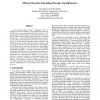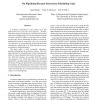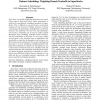415 search results - page 71 / 83 » On the energy-efficiency of speculative hardware |
ISCA
2002
IEEE
14 years 16 days ago
2002
IEEE
An increasingly large portion of scheduler latency is derived from the monolithic content addressable memory (CAM) arrays accessed during instruction wakeup. The performance of th...
ISSS
2002
IEEE
14 years 16 days ago
2002
IEEE
We have fabricated a Chip Multiprocessor prototype code-named Merlot to proof our novel speculative multithreading architecture. On Merlot, multiple threads provide wider issue wi...
MICRO
2000
IEEE
14 years 10 hour ago
2000
IEEE
A machine’s performance is the product of its IPC (Instructions Per Cycle) and clock frequency. Recently, Palacharla, Jouppi, and Smith [3] warned that the dynamic instruction s...
ISCA
1999
IEEE
13 years 12 months ago
1999
IEEE
Value Prediction is a relatively new technique to increase instruction-level parallelism by breaking true data dependence chains. A value prediction architecture produces values, ...
MICRO
1999
IEEE
13 years 12 months ago
1999
IEEE
Since there is generally insufficient instruction level parallelism within a single basic block, higher performance is achieved by speculatively scheduling operations in superbloc...



